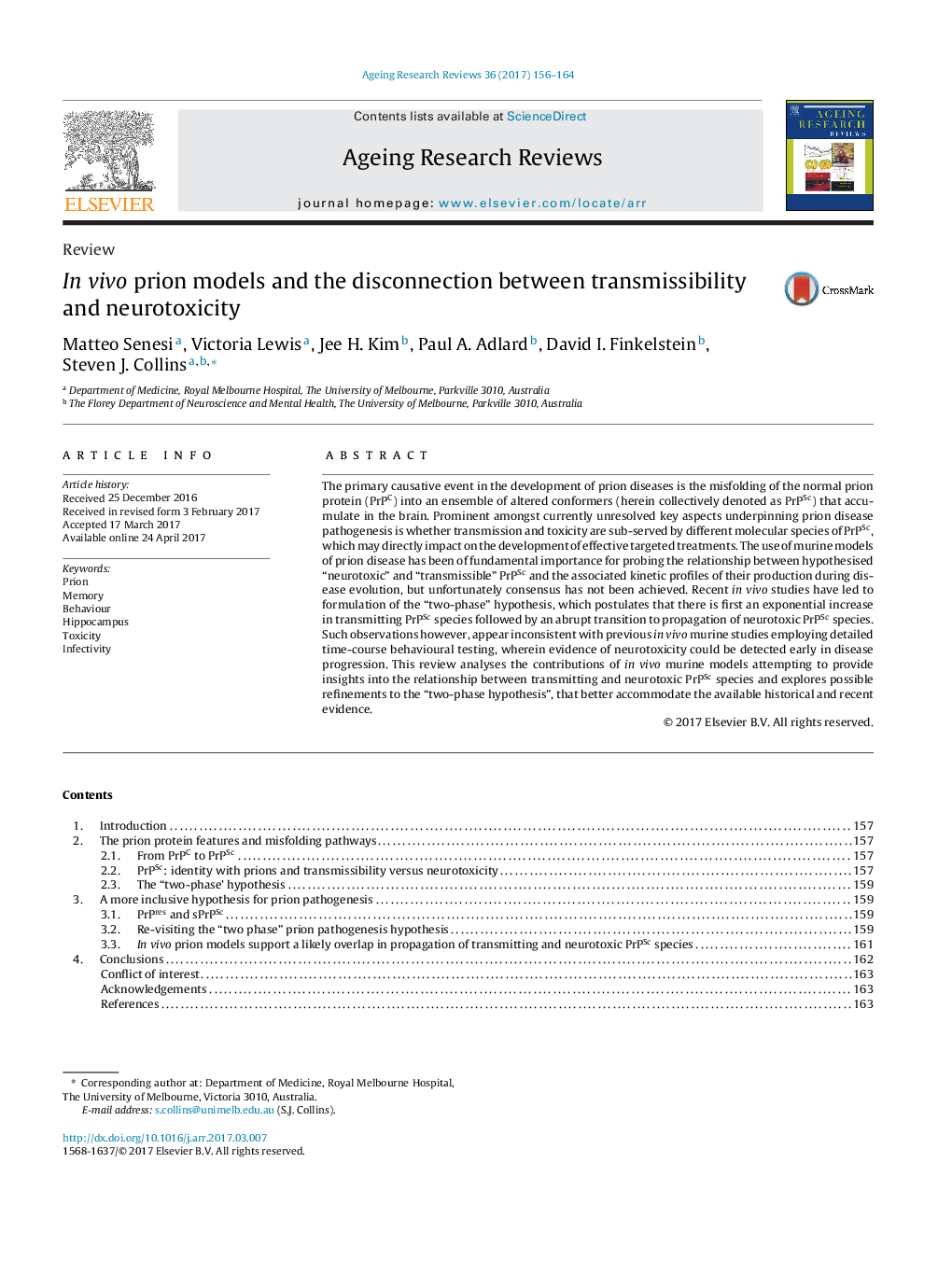| Article ID | Journal | Published Year | Pages | File Type |
|---|---|---|---|---|
| 5500634 | Ageing Research Reviews | 2017 | 9 Pages |
Abstract
The primary causative event in the development of prion diseases is the misfolding of the normal prion protein (PrPC) into an ensemble of altered conformers (herein collectively denoted as PrPSc) that accumulate in the brain. Prominent amongst currently unresolved key aspects underpinning prion disease pathogenesis is whether transmission and toxicity are sub-served by different molecular species of PrPSc, which may directly impact on the development of effective targeted treatments. The use of murine models of prion disease has been of fundamental importance for probing the relationship between hypothesised “neurotoxic” and “transmissible” PrPSc and the associated kinetic profiles of their production during disease evolution, but unfortunately consensus has not been achieved. Recent in vivo studies have led to formulation of the “two-phase” hypothesis, which postulates that there is first an exponential increase in transmitting PrPSc species followed by an abrupt transition to propagation of neurotoxic PrPSc species. Such observations however, appear inconsistent with previous in vivo murine studies employing detailed time-course behavioural testing, wherein evidence of neurotoxicity could be detected early in disease progression. This review analyses the contributions of in vivo murine models attempting to provide insights into the relationship between transmitting and neurotoxic PrPSc species and explores possible refinements to the “two-phase hypothesis”, that better accommodate the available historical and recent evidence.
Related Topics
Life Sciences
Biochemistry, Genetics and Molecular Biology
Ageing
Authors
Matteo Senesi, Victoria Lewis, Jee H. Kim, Paul A. Adlard, David I. Finkelstein, Steven J. Collins,
